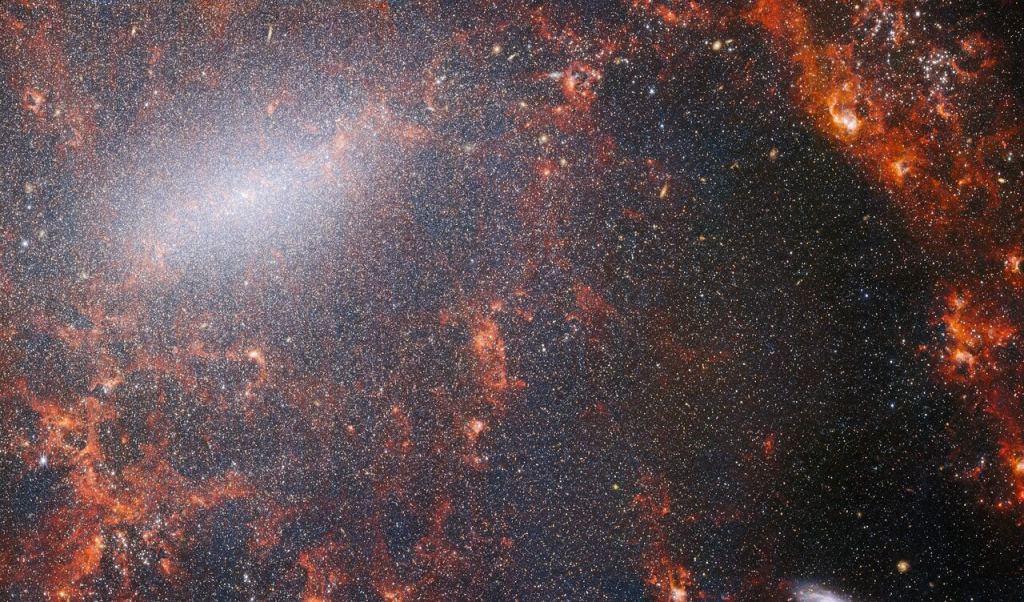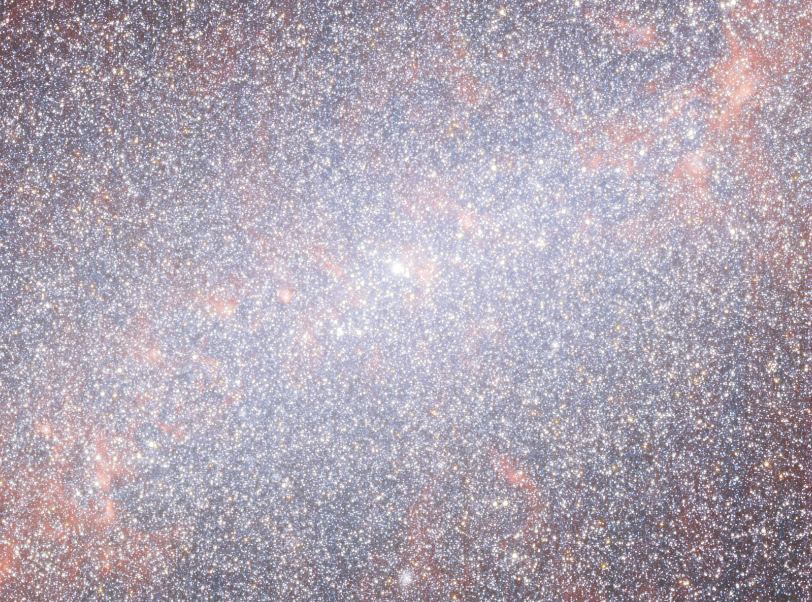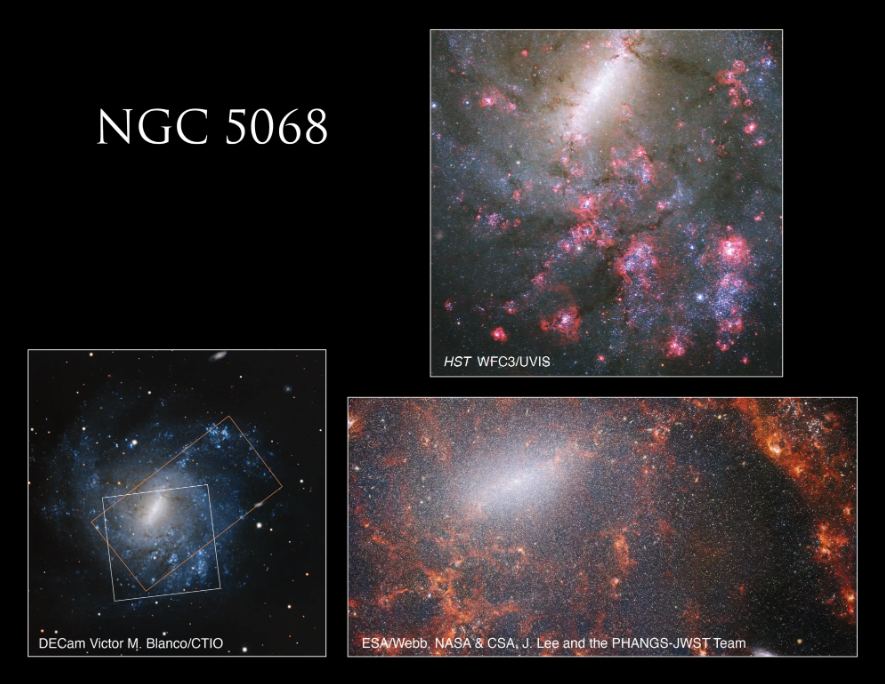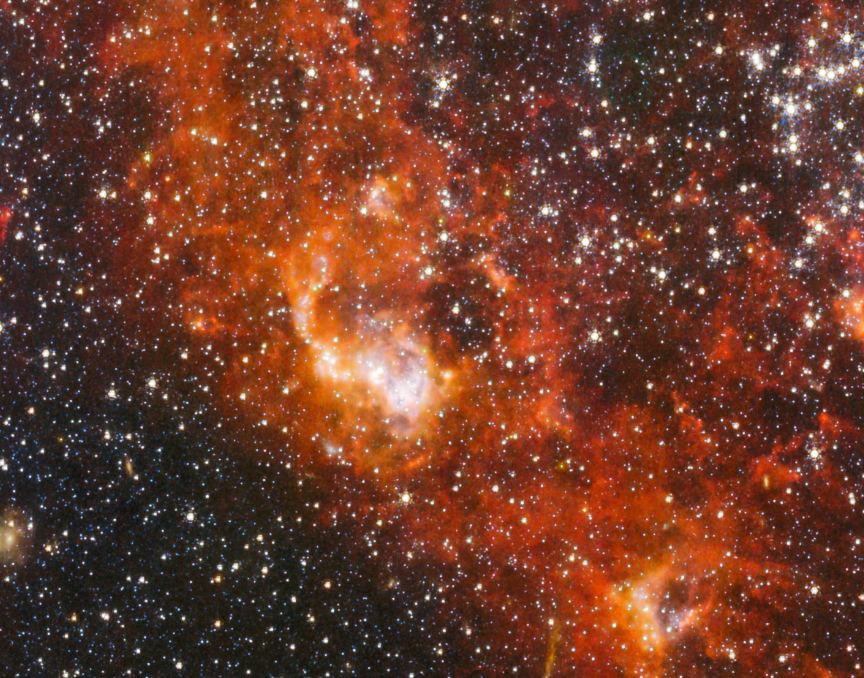The James Webb Space Telescope is widely considered to be better than the Hubble Space Telescope. But the JWST doesn't replace its elder sibling; it's the Hubble's successor. The Hubble is nowhere near ready to retire. It's still a powerful science instrument with lots to contribute. Comparing images of the same object, NGC 5068, from both telescopes illustrates each one's value and how they can work together.
NGC 5068 is a field galaxy, meaning it's alone and not gravitationally associated with a galaxy group or cluster. As a field galaxy, it's not likely to be gravitationally disrupted by another galaxy and will likely retain its shape for a long time. It's home to a massive population of stars, along with thousands of star-forming regions. The top of the leading image shows the tilted central bar, an indication of the galaxy's maturity.
Inside that bar lurks a supermassive black hole (SMBH), just like other barred spirals. The SMBH's gravity controls the velocity dispersion of stars in the central region and helps shape the galaxy. Astronomers think the spiral arms get their shape from density waves. The arms are younger than the central region and are regions of active star formation. Though it's not obvious in the Hubble image, the bright pink splotches are star formation regions in the arms. Star formation is an important area of research in astronomy.
Despite all that star formation, the galaxy itself is not bright. It's so dim that it's difficult to see with human vision. But its dimness is no problem for the Hubble. It can see not only in visible light but in ultraviolet and near-infrared, too. This multi-wavelength observing capability is a strength of the Hubble that the JWST can't duplicate, and the Hubble's ability to capture this image illustrates that capability.
The JWST, as almost everyone knows by now, is exceptionally powerful. Its two primary imaging instruments both operate in the infrared. They are NIRCam, the Near-Infrared Camera, and MIRI, the Mid-Infrared Instrument. Each one sees a different part of the infrared spectrum. Along with its infrared capabilities, the JWST can see objects about nine times more distant than the Hubble can. The Webb also has a variety of filters it can use on both infrared instruments to refine its observations further.
NGC 5068 is a great target for the JWST and its powerful infrared capabilities because it is so rich in star formation. But for it to host all that star formation, it also has to host a lot of gas that forms the stars. All that gas creates a veil that hides the star formation activity, and the JWST has the observing power to penetrate the veil. Seeing through the gas and dust to watch star formation is one of the JWST's top science goals.
The JWST's image of NGC 5068 is much different than the Hubble's. In the Hubble image, dark lanes of dust and gas obscure many of the individual stars. But in the JWST image, those same lanes are almost invisible. In the full-size JWST image, individual stars are resolved in the thousands.
The JWST and the Hubble aren't in competition. Their skill sets complement one another, and together, they provide more complete, more detailed images of objects like NGC 5068.
The JWST's image of NGC 5608 specifically builds on Hubble's images. It's part of the PHANGS (Physics at High Angular resolution in Nearby GalaxieS) observing program designed to study the earliest stages of star formation. In PHANGS, the JWST captured images of 19 nearby star-forming regions. Astronomers combined those images with Hubble's catalogue of over 10,000 star-forming regions. PHANGS also contains spectroscopic mapping of thousands of star-forming regions, as well as contributions from ALMA and the VLT. It's like a telescope All-Star Team, and it shows how telescopes work together.
"Combined with observations across the electromagnetic spectrum that capture all major stages of the star formation cycle, we can follow the progression of star formation – from molecular clouds to embedded and unembedded stellar populations – and provide new constraints on star formation efficiencies and timescales for theoretical models," wrote the authors of the paper presenting PHANGS first results.
The JWST generates a lot of headlines and gorgeous, attention-hogging images. We're all in awe of its power. But it was built with Hubble's contribution in mind, and by working together, they advance astronomy far further than one could without the other.
 Universe Today
Universe Today




